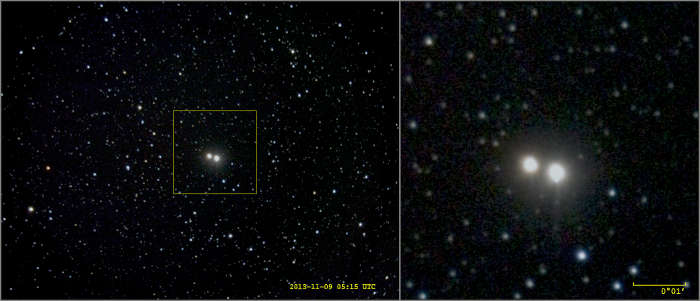In the last few years these type of stars have become particularly interesting to astronomers, as they appear to have the characteristics to host life-as-we-know:
To be habitable, a world (planet or moon) does not need to be located in the stellar habitable zone (HZ), and worlds in the HZ are not necessarily habitable. Here, we illustrate how tidal heating can render terrestrial or icy worlds habitable beyond the stellar HZ. Scientists have developed a language that neglects the possible existence of worlds that offer more benign environments to life than Earth does. We call these objects “superhabitable” and discuss in which contexts this term could be used, that is to say, which worlds tend to be more habitable than Earth. In an appendix, we show why the principle of mediocracy cannot be used to logically explain why Earth should be a particularly habitable planet or why other inhabited worlds should be Earth-like.
Superhabitable worlds must be considered for future follow-up observations of signs of extraterrestrial life. Considering a range of physical effects, we conclude that they will tend to be slightly older and more massive than Earth and that their host stars will likely be K dwarfs. This makes Alpha Centauri B, which is a member of the closest stellar system to the Sun and is supposed to host an Earth-mass planet, an ideal target for searches for a superhabitable world.
Heller, R., & Armstrong, J. (2014). Superhabitable worlds. Astrobiology, 14(1), 50-66. doi:10.1089/ast.2013.1088 (arXiv)
One of the most fundamental topics of exobiology concerns the identification of stars with environments consistent with life. Although it is believed that most types of main-sequence stars might be able to support life, particularly extremophiles, special requirements appear to be necessary for the development and sustainability of advanced life forms. From our study, orange main-sequence stars, ranging from spectral type late-G to mid-K (with a maximum at early K), are most promising. Our analysis considers a variety of aspects, including
(1) the frequency of the various types of stars,
(2) the speed of stellar evolution in their lifetimes,
(3) the size of the stellar climatological habitable zones (CLI-HZs),
(4) the strengths and persistence of their magnetic-dynamo-generated X-ray–UV emissions, and
(5) the frequency and severity of flares, including superflares;
both (4) and (5) greatly reduce the suitability of red dwarfs to host life-bearing planets. The various phenomena show pronounced dependencies on the stellar key parameters such as effective temperature and mass, permitting the assessment of the astrobiological significance of various types of stars. Thus, we developed a "Habitable-Planetary-Real-Estate Parameter" (HabPREP) that provides a measure for stars that are most suitable for planets with life. Early K stars are found to have the highest HabPREP values, indicating that they may be "Goldilocks" stars for life-hosting planets. Red dwarfs are numerous, with long lifetimes, but their narrow CLI-HZs and hazards from magnetic activity make them less suitable for hosting exolife. Moreover, we provide X-ray–far-UV irradiances for G0 V–M5 V stars over a wide range of ages.
Cuntz, M., & Guinan, E. F. (2016). About exobiology: the case for dwarf K stars. The Astrophysical Journal, 827(1), 79. doi:10.3847/0004-637X/827/1/79 (arXiv)
Read also:


No comments:
Post a Comment
Markup Key:
- <b>bold</b> = bold
- <i>italic</i> = italic
- <a href="http://www.fieldofscience.com/">FoS</a> = FoS